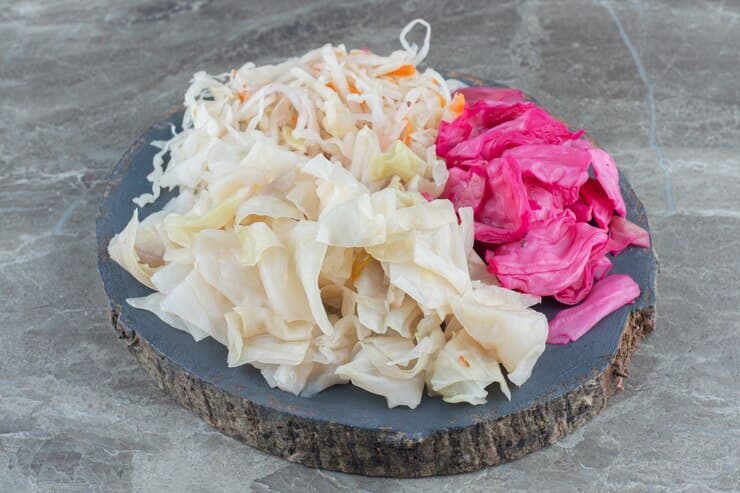Sauerkraut with Fennel Seeds Recipe Unveiled
Fermenting vegetables can seem enigmatic and intimidating at first, especially for beginners diving into the world of fermentation. Discovering the right balance of flavors and techniques is key to unlocking the magic of sauerkraut, particularly when infused with fennel seeds.
Fermented Veggie Trials: A History of Trial and Error
Initially, my journey with fermenting vegetables encountered hiccups. Attempting ginger carrots, recommended for beginners, left me disheartened with unpalatable results. This disillusionment persisted even after a year, leading to discarding the fermented carrots upon relocating.
The GAPS Diet Influence: Embracing the Fermentation Journey
While grappling with fermented veggies, the GAPS diet necessitated their inclusion in my meals for digestive health. Commencing with sauerkraut on this dietary regimen offered a turning point in my perception, leading to a newfound love for fermented foods.
Sauerkraut Reverence: A Transformation in Taste
The shift in my preference towards sauerkraut might have stemmed from the initial weeks of dietary change or the unique process of culturing. Nonetheless, it ignited a love for this fermented delight and sparked an inclination for diverse fermented vegetable creations.
Whey versus Salt Fermentation
The utilization of whey expedites the fermentation process significantly, ensuring consistency and a larger yield. However, favoring a salt-only ferment provides a distinct flavor profile, albeit at the expense of a slower process and minor cabbage loss.
Crafting Homemade Sauerkraut: An Easy Starter Guide
Creating sauerkraut at home demands minimal essentials—a wooden spoon, organic cabbage, salt, and a canning jar. The infusion of favorite herb seeds, such as fennel, compliments the flavor, while patience remains a necessary ingredient for the fermentation journey.
Educational Resources: Classes, Books, and Home Methods
For those seeking more insights into fermentation, local classes or comprehensive books, like ‘The Complete Idiot’s Guide to Fermenting Foods,’ offer valuable guidance. Additionally, the process of fermenting sauerkraut is accessible to most, irrespective of whey availability.
Elevate your taste buds with creative twists in Potato Pizza.
Crafting Simple Sauerkraut with Fennel Seeds: A Step-by-Step Recipe
Ingredients:
- 1 medium organic cabbage (about 2 pounds);
- 2 tsp sea salt (plus more for brine);
- 1/2 tsp fennel seeds (or preferred herb seeds);
- Optional: sliced onions or chopped peeled apple;
- Quart-sized canning jar(s).
Instructions:
- Rinse and prepare the cabbage, removing the outer leaves and coring it into quarters;
- Slice the cabbage into thin strips and toss with sea salt, letting it rest for 20-30 minutes;
- Pound the cabbage to release juices and layer it in a jar with seeds, onions/apples, and more salt, if needed;
- Top with brine water if required, leaving the jar loosely covered at room temperature for a week;
- Remove any discolored pieces and refrigerate, allowing it to mature for a few more weeks before consumption.
Crafting sauerkraut with fennel seeds introduces an aromatic dimension to the fermentation process, complementing the tangy flavors and offering a delightful twist to this traditional delicacy.
Tips to Diversify Your Sauerkraut Recipe:
- Play with Spices: Experiment with various spices like caraway, dill, fennel seeds, or even chili flakes to infuse distinct flavors into your sauerkraut;
- Add Fruits or Vegetables: Incorporate chopped apples, onions, juniper berries, or shredded carrots for added texture and complexity;
- Try Different Cabbages: Explore red cabbage, Savoy cabbage, or Napa cabbage for unique flavors and vibrant colors in your sauerkraut;
- Blend Herbs: Combine herbs like thyme, bay leaves, or rosemary to introduce herbal undertones to your sauerkraut;
- Experiment with Fermentation Time: Adjust the fermentation duration to achieve varying levels of tanginess and texture in your sauerkraut.
Conclusion
Exploring different ingredients and techniques adds versatility to this fermented delight, allowing you to create a personalized and diverse array of sauerkraut varieties.
